With no buyers, Colombian farmers are sitting on kilos of coca paste
Without explanation, sales in the municipality of Tibú have ground to a halt, dealing a blow to the local economy
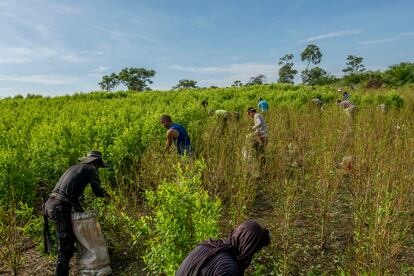
On this farm in El Zulia, on the Colombian border with Venezuela, there is only one man picking coca leaves. He arrived just 20 days ago, from the municipality of Tibú, about three hours away by car.
Six months ago, there would have been about 10 or 12 workers picking coca leaves on this farm. There also would have been no need to travel to another part of the department of Santander to look for work as a picker. But in Tibú, the Colombian municipality with the most coca cultivation – about 50 thousand acres worth – drug traffickers are no longer buying coca paste from the peasants.
“We live as coca growers and we’ve had many difficulties,” says Diomedes Quiroga, who supervises this 20-acre coca farm, which belongs to his sister. “We’ve stopped growing coca for a bit due to the situation… those who have a little spare land [have also started] planting crops like cassava.”
It’s not clear why the traffickers have stopped buying coca paste, the crude extract of the coca leaf that is essential for cocaine processing. Some think that it could be due to the 2021 capture of Dario Antonio Úsuga – alias Otononiel – the leader of Colombia’s largest drug cartel, the Clan del Golfo.
“Around here, the talk is that Otoniel gave up everything [to the Americans] when he was captured,” explains Quiroga. Others believe that a series of operations carried out by the Venezuelan regime along the border have destroyed many of the drug traffickers’ transport routes. And there’s another rumor: that the ELN guerrillas have ceased the production and sale of cocaine in preparation for a peace deal. Of course, nobody can confirm any of these theories.
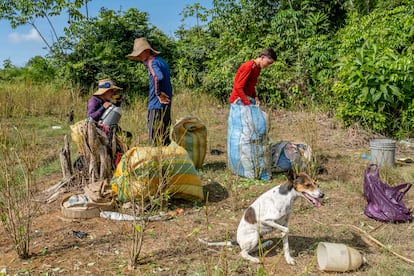
While many in this part of Colombia think that the sudden lack of buyers is unprecedented, for Daniel Rico – an expert in drug policy and the director of the risk management consulting firm C-Análisis – the slowdown could simply be related to difficulties moving inventory into the United States from Mexico, Honduras and El Salvador.
“In the drug trafficking business, from the time the cocaine is produced until it is sold, it can take two years.”
The troubles affecting the coca economy have unleashed a kind of recession in Tibú. The growers keep kilos of coca paste hidden in plastic bags at home, waiting for buyers.
“Here, coca represents a huge part of the economy,” says Nelson Leal López, the mayor of Tibú since August of this year. “That’s where a lot of the money comes from to buy food, medicine.”
Peasant farmers usually buy a kilo of coca paste for 2,750,000 Colombian pesos ($600). Today, they still have leftover stock. One grower has been keeping three kilos of coca paste in his house since July – about $1,800 worth. With no traffickers to buy his paste, he hasn’t been able to pay his workers.
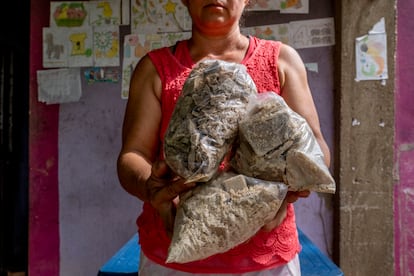
Many pickers are still waiting for their money. Some have even had to accept being paid with pieces of paste – the same paste that was made from the leaves they ruined their hands picking. Many have sought work in coal mines or oil palm plantations, even though they earn far less than what they used to make.
César Ruiz, president of the board of the Campo Raya village – about an hour-and-a-half from Tibú by car – expresses his concerns: “Here, every week, they deliver food… but who can afford it? Nobody buys. The new government needs to do something.”
Pickers, farmers and local politicians in Tibú are generally in agreement that the previous right-wing administration of Iván Duque (2018-2022) never implemented anything to help the area’s economy transition away from illicit crops. Even though, affirms Teoniro Vargas, president of the Peasant Movement of Coca, Poppy and Marijuana Growers (Coccam) of El Zulia, “we have always had the will to do so.”

“We want to change the crops and benefit from the substitution program… the price [of coca] in the region is very low and we are also working at a loss,” he explains.
Perhaps for the first time, coca is less profitable than other crops in Tibú.
“It’s the ideal time for us to reach out to farmers to change their mentality,” says Mayor Leal. “The fact that there is less income from coca leaves makes people more likely to seek other sources of income. However, it’s an opportunity with limits, because the drop in prices and demand is transitory.”
It’s unclear how big this window of opportunity is for the recently-elected government of President Gustavo Petro. The left-wing leader’s rhetoric has dealt a lot with drug policy. He has mused about putting an end to the aerial fumigation against crops for illicit use and of strengthening the Comprehensive National Program for the Substitution of Illicit Crops (PNIS).
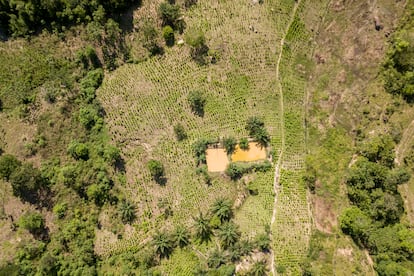
But in Tibú, there’s still an air of uncertainty, especially after comments that Petro made following a meeting with US Secretary of State Antony Blinken, in which he promised to continue the eradication of coca leaves in areas that “are industrial (narco-owned)... and do no belong to the peasantry.” The president even named Tibú as a place where coca eradication would continue.
“From that meeting, we feel that there is no clarity, only confusion,” says Ruiz. “The issue is that forced eradication will supposedly continue to attack large areas and drug traffickers. But how will that work? We’re concerned that, when it comes to eradicating, [the government] will not distinguish whether it’s a large or small crop yield.” Still, he isn’t alarmed just yet: during the Third Cocalero Meeting – to be held in Tibú on October 28 and 29 – a government delegation will attend to hear the residents’ concerns.
Just as he finishes expressing his hope, from the door of Ruiz’s house, a military helicopter can be seen passing by.
“What’s going on?” someone shouts.
“They were going to Caño Indio – about 40 minutes from here. The communities told us that they were trying to carry out forced eradication, but the peasants stopped them,” someone replies.
It is clear that Tibú – and all of the North of Santander, where almost 100 thousand acres of coca are cultivated – will be the testing ground for Colombia’s new drug policy.
Tu suscripción se está usando en otro dispositivo
¿Quieres añadir otro usuario a tu suscripción?
Si continúas leyendo en este dispositivo, no se podrá leer en el otro.
FlechaTu suscripción se está usando en otro dispositivo y solo puedes acceder a EL PAÍS desde un dispositivo a la vez.
Si quieres compartir tu cuenta, cambia tu suscripción a la modalidad Premium, así podrás añadir otro usuario. Cada uno accederá con su propia cuenta de email, lo que os permitirá personalizar vuestra experiencia en EL PAÍS.
¿Tienes una suscripción de empresa? Accede aquí para contratar más cuentas.
En el caso de no saber quién está usando tu cuenta, te recomendamos cambiar tu contraseña aquí.
Si decides continuar compartiendo tu cuenta, este mensaje se mostrará en tu dispositivo y en el de la otra persona que está usando tu cuenta de forma indefinida, afectando a tu experiencia de lectura. Puedes consultar aquí los términos y condiciones de la suscripción digital.
More information
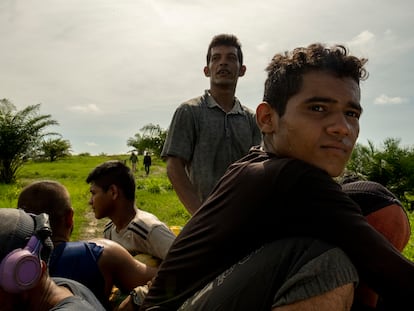
Picking coca leaves in Colombia: The thankless job that Venezuelans are doing
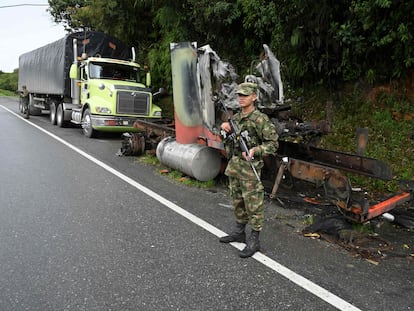
The war on drugs: 50 years of death and failure
Archived In
Últimas noticias
Maduro pleads not guilty before the federal court in New York: ‘I am still the president of Venezuela’
A new test can detect Alzheimer’s from a finger prick
UN team enters Sudanese city of El Fasher after paramilitary massacre: ‘It’s like a ghost town’
A recipe for resistance: Indigenous peoples politicize their struggles from the kitchen
Most viewed
- Gilles Lipovetsky: ‘If you want to live better and fall in love, take Prozac, don’t look to philosophy’
- Alain Aspect, Nobel laureate in physics: ‘Einstein was so smart that he would have had to recognize quantum entanglement’
- Alvin Hellerstein, a 92-year-old judge appointed by Bill Clinton, to preside over Maduro’s trial in New York
- Why oil has been at the center of Venezuela-US conflicts for decades
- Maduro’s downfall puts China’s relationship with Venezuela to the test








































